The best frigates of our time
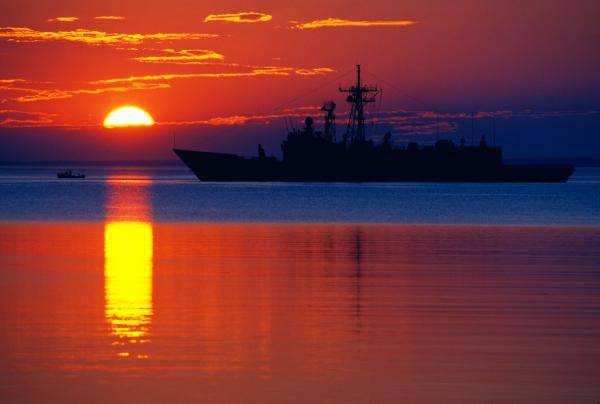
The frigate is a warship with a displacement of 3000 ... 6000 tons, equipped with guided missile weapons. The main purpose - the fight against the air and underwater enemy, accompanied by the main forces fleet and especially important convoys. A versatile escort ship capable of operating at any distance from the coast. It is this definition for the frigate that the NATO classification of the 1975 model gives.
In practice, the tasks of the “frigate” class ship are much broader - from performing patrol missions in the coastal zone and open sea areas to limited participation in local wars (blockade and de-blockade of sea lanes, conducting “point” assault forces, symbolic fire support of ground forces). Battle campaigns, flag demonstration, participation in international maritime exercises and search and rescue operations.
The frigate is always a compromise., a modest warship a priori can become a "super-hero." The meaning of the emergence of frigates - saving in exchange for mass. The specifics of sentinel and escort missions imply the dispersal of forces, which, in turn, entails a requirement to reduce the cost of ships — their combat capabilities are sacrificed for economy. In order to meet the estimate, the creators of the frigates are forced to reduce the ship’s weapons complex, to abandon some radio-electronic systems, replacing full-fledged radars and hydroacoustic complexes with “replicas” with reduced characteristics.
Extremely dense layout and small size adversely affect the survivability of the ship. For example, on American frigates of the type "Oliver H. Perry" (a giant series of 71 units, including export and licensed assembly), a single-shaft GEM scheme was used - a risky decision that contradicts all the rules for designing warships.
The fact that any modern frigate is an incapable trough pretending to be a warship has become clear a long time ago. The US Navy was convinced of this on its own experience, when the frigate Stark could not repel the attack of a single Iraqi Air Force plane. Having received two missiles on board, the Stark almost died in the Persian Gulf. The victims of the incident were 37 sailors.
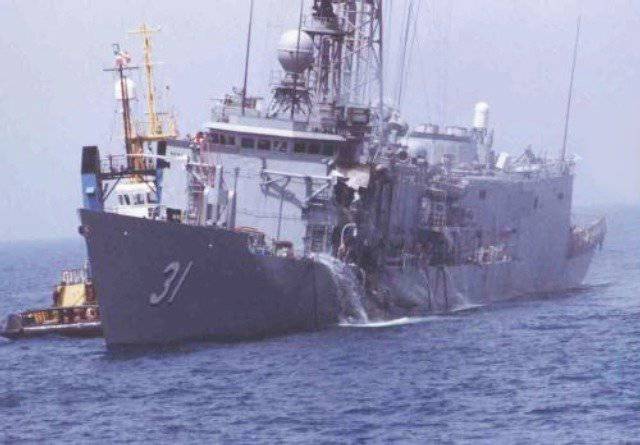
The British suffered even more during the Falklands War - the unfortunate frigates of Her Majesty, pretending to be important for destroyers, were beaten by free-fall bombs from subsonic airplanes! A plot worthy of World War II, but not 1982 of the year.
The Americans were so disappointed with the combat capabilities of the frigates that they experimented with numerous Knoxes and Perry and completely abandoned the further construction of ships of this class. Place all the necessary systems and weapons in the 4000-ton package was not possible. To achieve acceptable performance (power, versatility, seaworthiness, high survivability, comfortable accommodation of personnel), a destroyer with a displacement of at least 8000 tons is required.
As a result, all the last 20 years of the Yankees have been built only by large Aegis destroyers of the Orly Burk type. By 2013, they were already riveted by 62 pieces - more than frigates in all countries of the world combined. However, there is nothing to be surprised at - having 16 trillions of external debt, you can build starships instead of destroyers.
Time makes its own adjustments - progress in microelectronics has allowed a drastic reduction in the dimensions of radio engineering systems. The small size of the frigate turned its advantage - using stealth technology, the EPR of modern frigates has decreased to the EPR value of a torpedo boat. High technology and composite materials, undoubted progress in engine-building, new weapon systems - all this significantly increased the efficiency of small escort ships.
The frigate of the beginning of the XXI century turned into a universal warship capable of taking part in low-intensity military conflicts and performing almost the whole range of tasks facing the modern navy.
No doubt, other things being equal, the frigate is inferior to the destroyer. But only the Pentagon has unlimited financial opportunities - the shipbuilders of other countries have to compromise and create efficient ships without wasteful spending and with the minimum necessary equipment. Let's see what happened.
Turkish gambit
The total displacement is 4200 tons. Crew 220 man. Two gas turbines General Electric LM2500 accelerate the frigate to 30 nodes. The fuel supply on board provides 5000 cruising miles at cruising speed 18 knots.
Armament:
- Mk.13 beam-type launcher (8 anti-ship harpoon missiles and 32 medium-range anti-aircraft missiles SM-1MR are stored in the underdeck store);
- installation of vertical launch Mk.41 (ammunition - 32 anti-aircraft missiles self-defense RIM-162 ESSM);
- OTO Melara artillery system caliber 76 mm;
- anti-aircraft artillery complex of self-defense "Phalanx" (six-barrel gun caliber 20 mm, radar and fire control system mounted on a single gun carriage);
- anti-submarine system Mk.32 (two TA, six small torpedoes);
- anti-submarine helicopter Sikorsky S-70 Seahawk.
A series of eight Turkish frigates of type G. In fact, the Turkish names here are only the names - Gaziantep, Giresun, Gemlik ... Otherwise, these are purely American ships - outdated frigates of the type "Oliver Hazard Perry" (series with "short "Corps), transferred to the Turkish Navy after 15 years of service under the stars and stripes.
The second important point is that the Turkish G-type frigates resemble their predecessors only externally - inside these are in many ways other ships, whose systems and weapons have undergone extensive modernization.
In contrast to the dull “Perry”, the ship’s air defense was seriously strengthened - in addition to the “one-armed bandit” (the humorous name of the Mk.13 launcher), 8 of the Mk.41 UVP cells appeared in the nose (short, “defensive” version - as whatever the Turks tried to charge Tomahawk into it - they won’t succeed). Only anti-aircraft missiles RIM-162 ESSM, for 4 in each cell. However, there is an opinion that Turkey has not received any ESSM. Instead of the promised Evolved Sea Sparrow Missle super-missiles capable of maneuvering with 50-multiple overload and intercepting targets at 50 km, Turkish sailors were given the usual RIM-7 Sea Sparrow, with all the results.
No less serious changes have undergone electronics. The modern combat information and control system GENESIS of Turkish production (built, of course, on Chinese components) was installed on the frigates. Electronic frigate systems were integrated into the military tactical real-time data exchange network Link 16 (US and NATO standard). The fire control system Mk.92 has been added; updated hydroacoustic complex. In addition, the frigates received an integrated ASIST helicopter landing and towing system.
The advantages of frigates type G:
- high autonomy;
- impressive anti-aircraft ammunition.
Disadvantages of type G frigates:
- archaic design;
- an open air defense circuit (once it became fatal for the Stark frigate);
- Single-channel scheme of the power plant.
Talwar
The total displacement is 4000 tons. Crew 180 man. Two GTE economic progress, two afterburner GTE. Full move 30 nodes. 4850 cruising range at cruising speed of 14 knots. The cost of one frigate - 500 million.
Armament:
- Universal Ship Shooting Complex (UKKS) on 8 cells. Ammunition - the Club-N cruise missiles (export version of the Caliber) and / or the Brahmos supersonic anti-ship missiles;
- “Smooth-1” air defense missile system (one-frame launcher, 24 SAM);
- 2 anti-aircraft rocket and artillery complex 3Р87Е "Chestnut" (ammunition of both modules - 64 melee missiles + two twin six-barreled guns with a rotating block of barrels);
- universal gun AK-190 caliber 100 mm;
- 12-barreled jet bombers RBU-6000 (ammunition load - 48 jet depth bombs)
- two torpedo tubes with 16 torpedoes;
- anti-submarine helicopter Ka-28.
A series of six Indian frigates built at Russian shipyards. The base for Talvar was the Petrel 1135 project - the glorious guard ships (BOD of the 2nd rank), which were massively built for the Soviet Navy in the 1970s (32 units in the series). The Petrel was so successful that on its base a whole family of frigates appeared - anti-submarine, border, export modifications.
New weapons and modern electronics "breathed life" the old design - modification 1135.6 (Indian "Talwar") has become one of the most interesting examples of frigates of the beginning of the XXI century: relatively simple, cheap and effective.
Talwar has become an important stage in stories Indian Navy - Indian sailors for the first time received ships with vertical launchers in the underdeck space. Modern multi-purpose frigates with universal weapons and elements of reducing radar visibility (superstructure from side to side, blocking the upper part of the board "inwards", reducing the number of radio contrast parts - the usual techniques of "stealth" technology). New CIU “Requirement M”, three-coordinate radar “Fregat-M2EM” with a phased antenna array.
One of the differences between the Talvar frigates and their European counterparts was the presence of a powerful shock armament system — the eight-charge USK, cruise missiles for striking ground targets, and supersonic anti-ship missiles — a tribute to the traditions of the Soviet Navy.
As practice has shown, “Talvar” is far from the limit, the modernization potential of the old “Burevestnik” allowed the creation of an even more formidable ship on its basis - the 1135.6 R / M project to equip the Russian Navy. In contrast to the “Indians”, these ships will receive a full-fledged Caliber complex and an updated Shtil-1 air defense system with submarine UVP. At the moment there are three ships of this type in Russian shipyards, the lead frigate “Admiral Grigorovich” is planned to be launched in the summer of 2013.
Advantages of Talvar frigates:
- versatility;
- strike weapons.
Disadvantages of Talvar frigates:
- one-gates PU “Stil” air defense missile complex, significantly limiting the air defense capabilities of the ship;
- low autonomy for fuel reserves (hereditary 1135 disease).
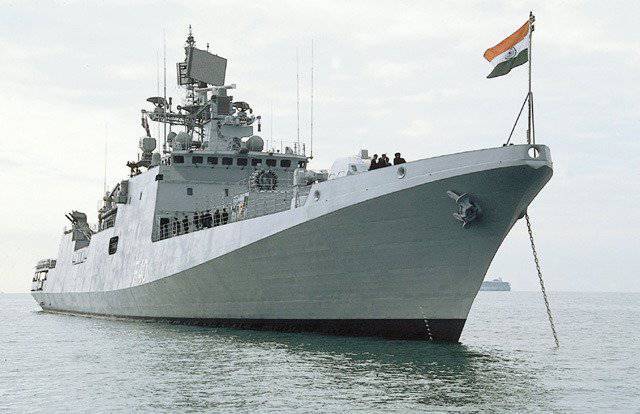
Horizon
The total displacement is 7000 tons. Crew 230 man. Two diesel engines of economic progress, two gas turbines LM2500. Full move 30 nodes. 7000 cruising range at cruising speed of 18 knots. The cost of one frigate - 1,5 billion euros.
Armament:
- PAAM marine anti-aircraft complex (48 Sylver A-50 cells, Aster anti-aircraft missiles);
- 8 anti-ship missiles "Exochet";
- SAM self-defense system Sadral (only on French ships);
- 2-3 universal tools OTO Melara caliber 76 mm;
- 2 automatic gun caliber 20 mm;
- small anti-submarine torpedoes MU90 Impact;
- helicopter NH90 or AW101 Merlin.
The horizon overgrown frigate (Horizon, Orizzonte, or CNGF - Common New Generation Frigate) - the result of the joint efforts of France, Italy and the UK, who dreamed of creating a European warship of the new generation, and thus "wiping the nose" Uncle Sam with his countless Aegis-type destroyers "Burke".
The expectations of the Europeans were not justified - the built ships were inferior to the "Burke" in universality, while having an exorbitant cost comparable to the cost of the American destroyer (after all, the Yankees know a lot about standardization and lowering the cost of goods during mass production). In contrast to the 62 built "Berkov", a series of frigates "Horizon" limited to only four units - two ships for the Italian and French Navy.
The British quarreled with their colleagues in the middle of the “creative path” and, taking the documentation, began to “sculpt” their own destroyer, which meets all the requirements of Her Majesty’s fleet.
The result was the twins - the Italian-French frigates "Horizon" and the British destroyers of the "Daring" type. Almost identical dimensions, similar hull lines and superstructure architecture - the destroyer can be easily confused with the frigate. A close acquaintance only enhances the impression: the same PAAMS air defense complex, Sylver vertical launch installations, i-mast multifunction mast, S1850M airborne radar with a phased antenna array, a white radar of the second radar on top of the foremast ...
Stop! And here is an important difference - the British destroyers are equipped with a SAMPSON super-radar with active PAR, that sees a seagull at a distance of 100 km and controls the airspace within 400 radius of km from the ship’s side. Means of detection of frigates are much more modest - under the white cap on the foremast hides “only” EMPAR three-dimensional radar.
This fact alone explains the difference in the classification of two identical ships - the frigate remains a frigate (albeit the largest in its class), and the British ship, saturated with the most modern electronics, certainly deserves the title of a destroyer.
The advantages of the frigate "Horizon":
- exceptional opportunities in terms of air defense;
- huge autonomy (the frigate is able to cross the Atlantic diagonally);
- high automation.
The lack of frigate "Horizon":
- crazy cost.
Spanish hidalgo
Full displacement 5800 tons (+ modernization reserve 450 tons). Crew 250 man. Two diesel Caterpillar for economic progress, two gas turbines LM2500. Full move 29 nodes. 4500 cruising range at cruising speed of 18 knots. The cost of the frigate - 1,1 billion.
Armament:
- 48 MK.41 UVP cells (“tactical” option: ASROC-VL anti-submarine missile torpedoes, SM-2ER anti-aircraft long-range missiles, Sea Sparrow and ESSM self-defense anti-aircraft missiles, except for the US Navy’s Tomahawks. any proportion);
- 8 anti-ship harpoon missiles;
- universal artillery gun Mk.45 caliber 127 mm;
- Merok anti-aircraft artillery complex of 20 caliber mm;
- 2 automatic guns "Oerlikon" with manual guidance;
- 2 jet bombs ABCAS / SSTS;
- 24 small anti-submarine torpedoes Mk.46;
- anti-submarine helicopter Sikorsky SH-60B system LAMPS III.
Unlike the French and Italians, enterprising Spaniards did not "reinvent the wheel", but did much easier - copied Aegis, a destroyer of the type "Burke". However, the "copied" sounds disrespectful: the Spaniards carefully studied and adjusted the project of the American destroyer to their requirements. Of course, the “correction” was reduced only to the deterioration of the original structure in the weather, with savings.
As a result, a series of “Alvaro de Bassan” appeared - five large frigates, each of which has ½ capabilities of “Burke” at a lower cost by 30%. The Spaniards retained the main thing - the combat information and control system "Aegis" with a multifunctional radar AN / SPY-1. Spanish software developers were directly involved in creating the software. In addition, the Thales Sirius French optical-electronic detection system and the own-made weapon control system FABA Dorna were installed on the frigates.
There were drawbacks - in contrast to its progenitor, the frigate lost the third AN / SPG-62 fire control radar, which limited the ability of “de Basan” to repel massive air attacks. However, the Spaniards do not worry about this - the frigate is unlikely to have to go into a serious battle, and even if it is necessary - the American Aegis destroyer Orly Burk will always be next.
In an effort to compensate for the weakening of the frigate's armament complex, the Spaniards installed several systems on it that did not fit NATO standards - jet-bombed and the Meroka's own-designed 12-barreled anti-aircraft system.
The advantages of the frigate "Alvaro de Basan":
- Aegis system;
- universal UVK Mk.41 on 48 cells;
Disadvantages of the frigate "Alvaro de Basan":
- The Spanish Navy received an excellent warship, whose capabilities correspond to the funds invested in it.
Frenchman from Singapore
The total displacement is 3200 tons. Crew 90 man. Four MTU diesels provide full speed 27 nodes. Range 4200 miles on 18 nodes.
Armament:
- 32 cell arrester Sylver A-50 (Aster anti-aircraft missiles);
- 8 anti-ship harpoon missiles;
- OTO Melara universal caliber 76 mm artillery gun (120 firing rate / min.);
- 2 self-defense system "Typhoon" caliber 25 mm;
- anti-submarine torpedoes EuroTorp A244 / S Mod 3;
- anti-submarine helicopter Sikorsky S-70.
The most advanced warships in Southeast Asia are the magnificent six Formideb-type Singapore frigates (Grozny). The most modern technical solutions, unique electronics, long-range Aster-30 anti-aircraft missiles, a multipurpose weapon system, and impressive ammunition - all this fit in the body with a displacement of just over 3 thousand tons. "Formidebl" is one of the most effective systems of naval weapons!
In the form of "Formidebl" slip familiar features ... Well, of course! This is a French stealth frigate "Lafayette", a special modification for the Singapore Navy.
The futuristic frigate that appeared in 1996 year intrigued the whole world: for the first time in world practice, the stealth technology found such wide use in the construction of a serial ship - even the bow of the deck with anchor windlass was hidden under a special cover. No protruding radio contrast elements in the frigate appearance!
In addition, Lafayette possessed decent armament and excellent nautical qualities - a successful project was appreciated in many countries of the world. French shipbuilders received a weighty order book: the most “picky” countries without a doubt chose Lafayate as the main surface ship. So there were interpretations on the basis of Lafayette - Al Riyad (Saudi Arabian Navy), Kang Ding (Naval Forces of the Republic of Taiwan) and, finally, Formidebl (Singapore Naval Forces).
Each of them was distinguished by an exclusive set of equipment and weapons - the combined design of a frigate of eighty 300-ton modules made it possible to realize any desires of the customer. All other things being equal, the Singapore version is considered the most successful.
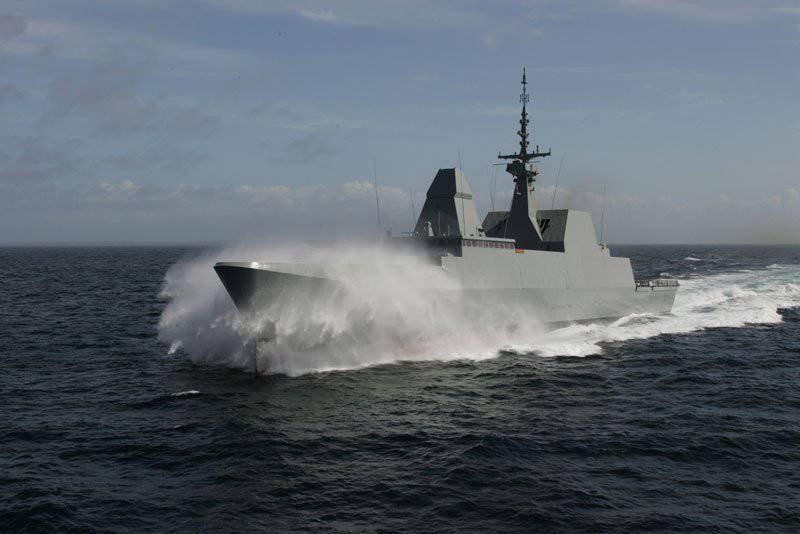
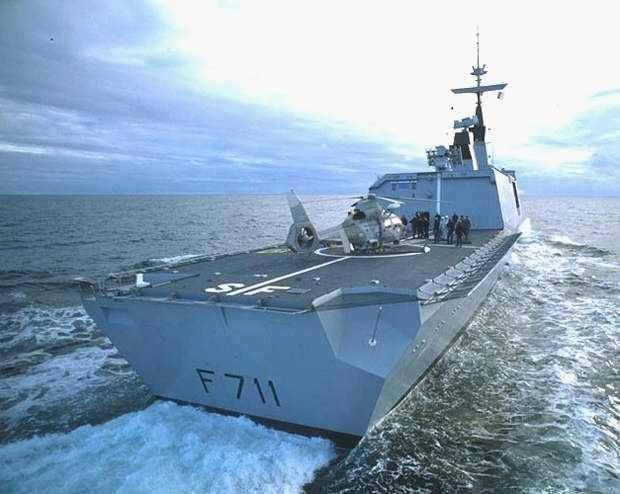
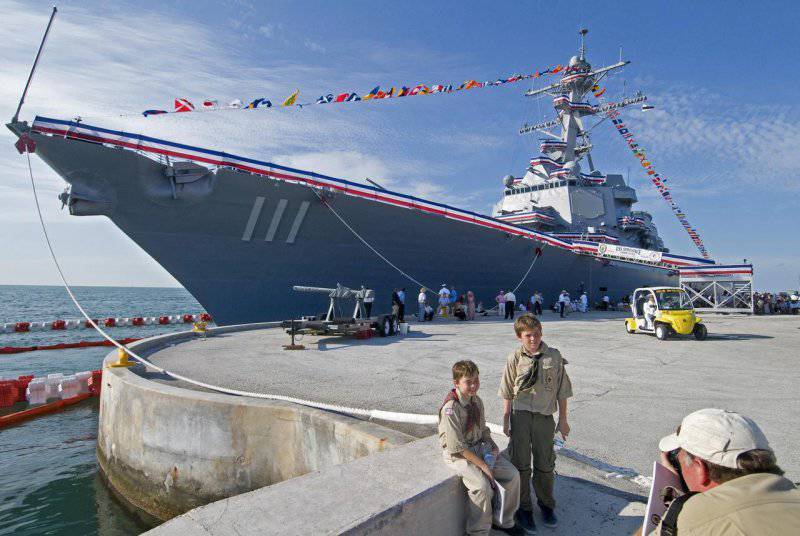
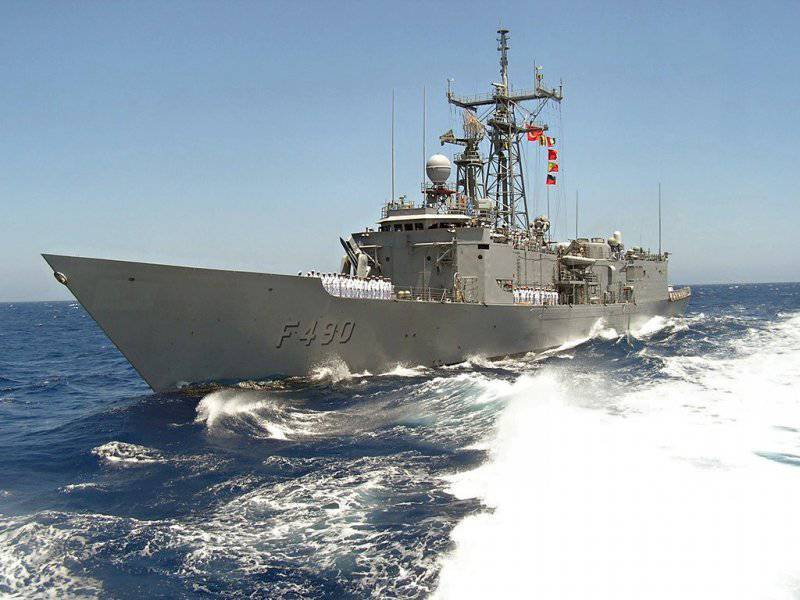

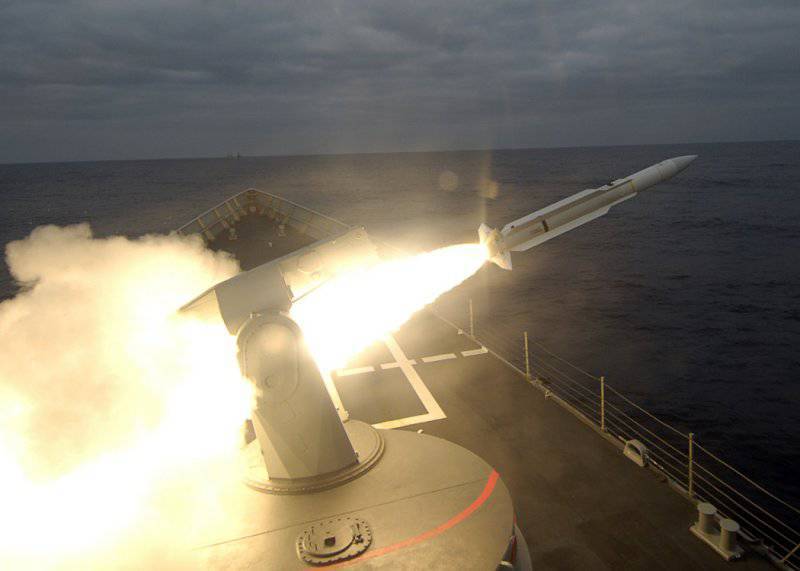

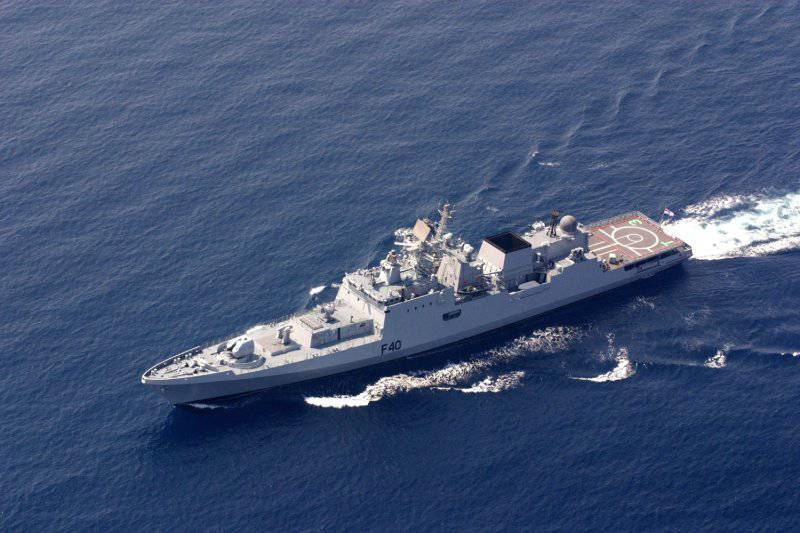
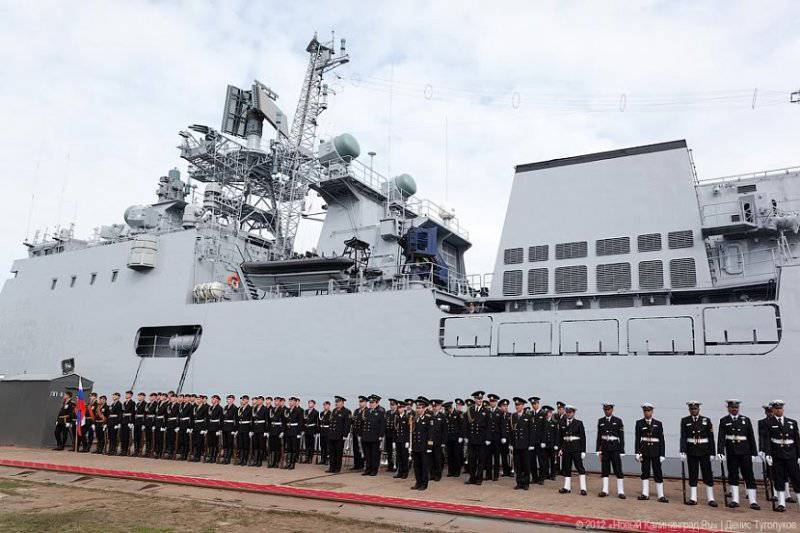
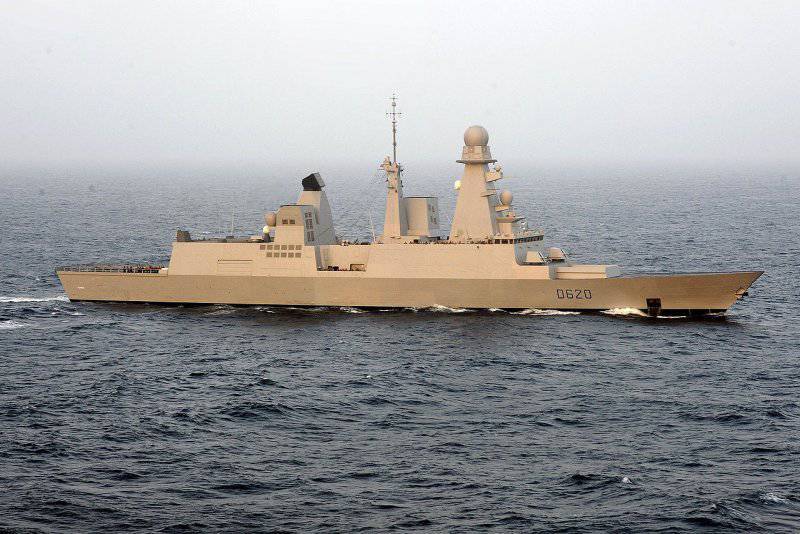
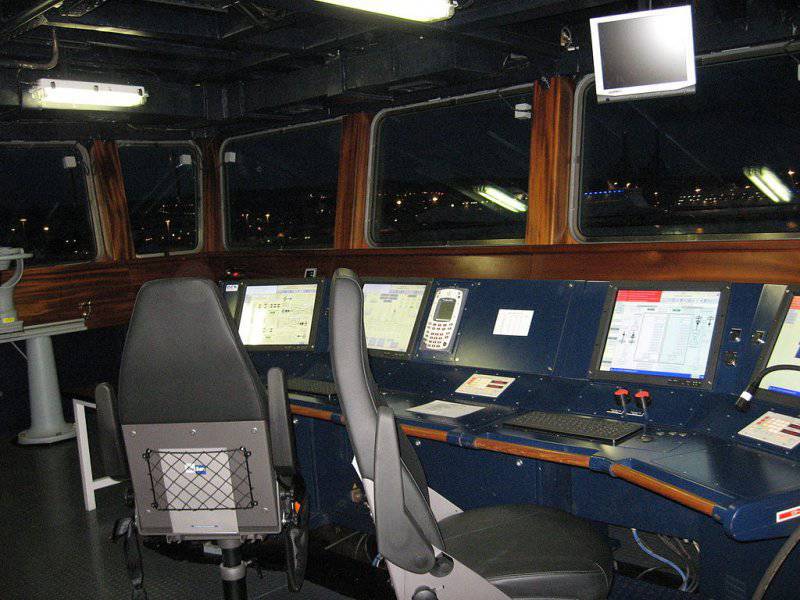
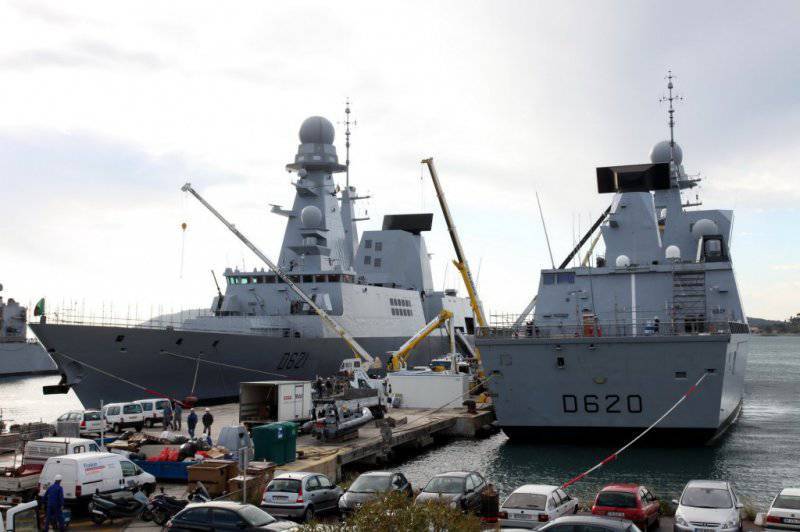
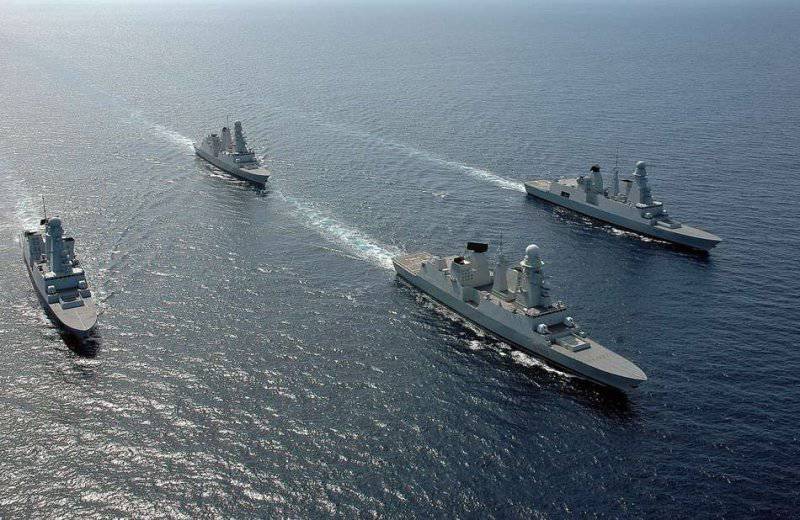
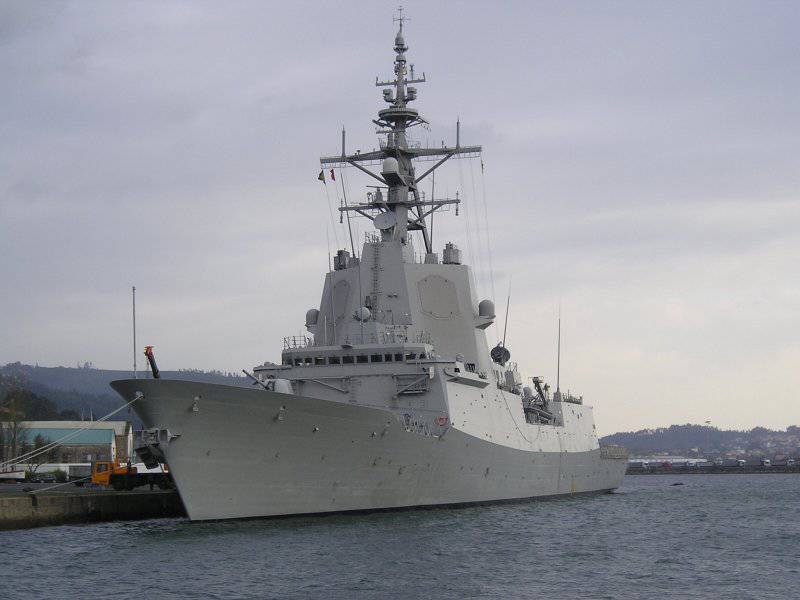
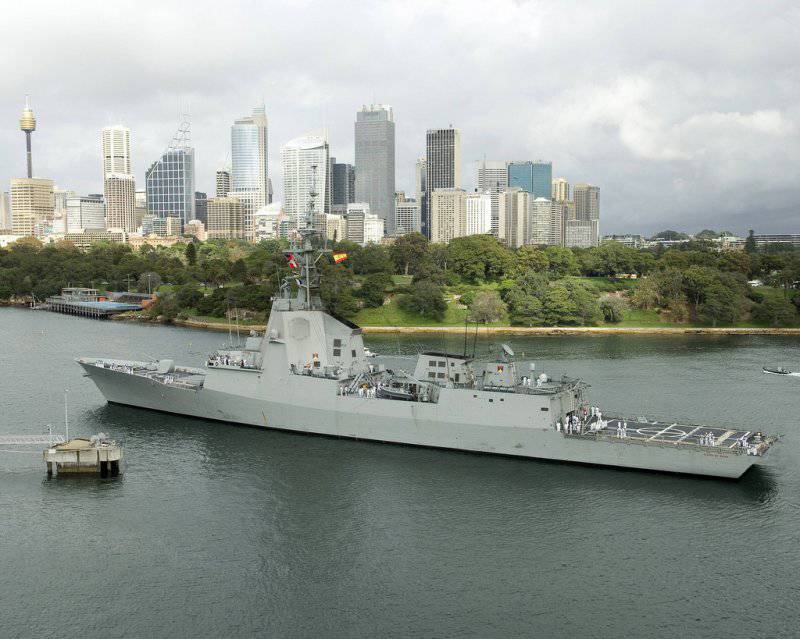
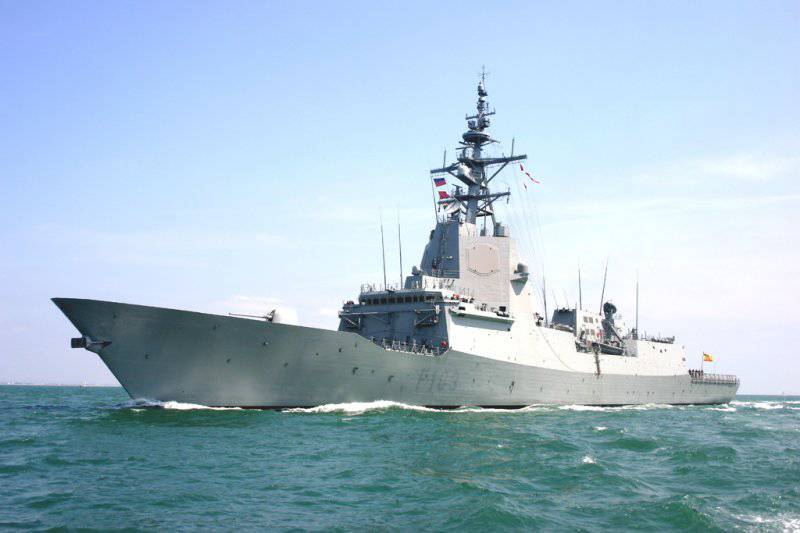
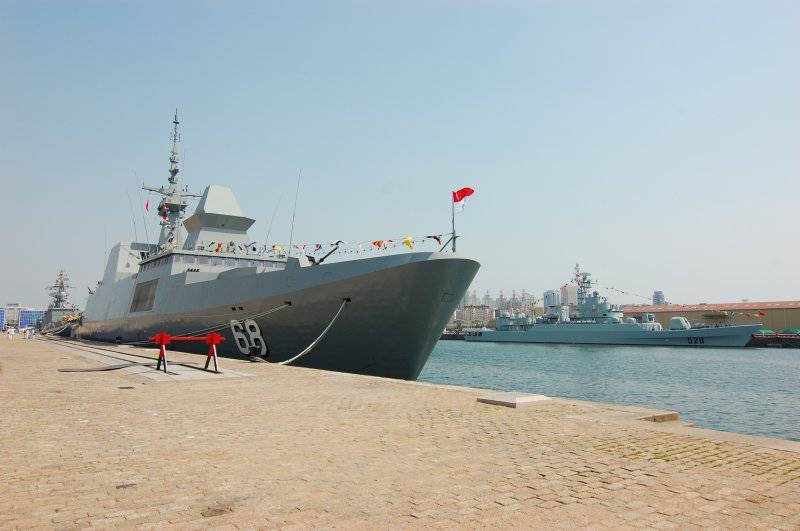
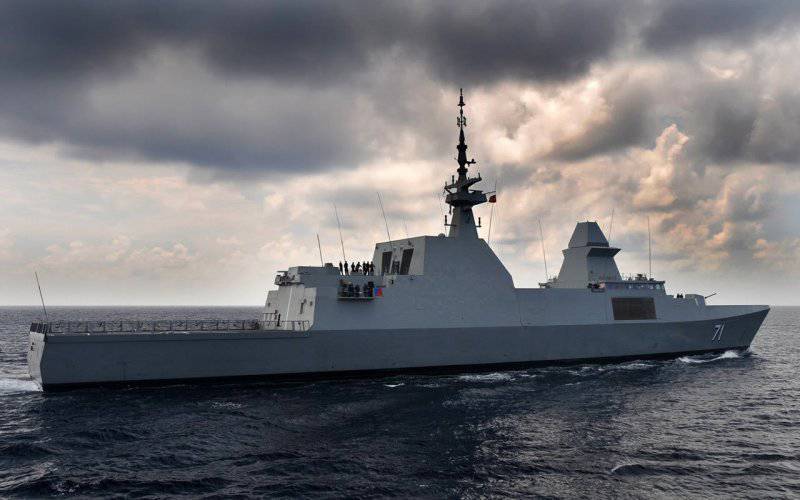
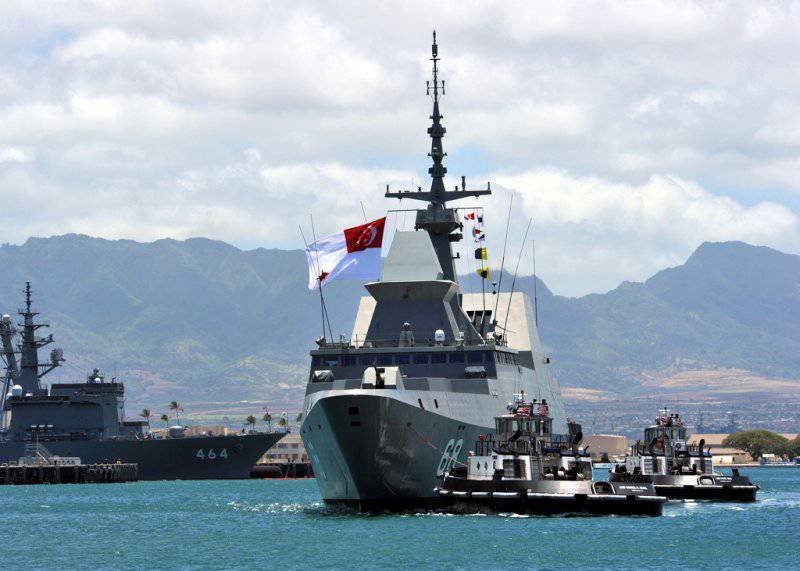
Information